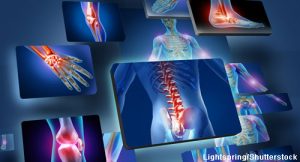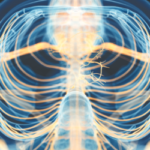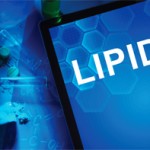 ATLANTA—In the future, resolving inflammation may not be limited to administering therapies that target the mediators that cause inflammation. Instead, we may be able to focus on endogenetic mechanisms. As described during the session Resolving Inflammation in Autoimmune Disease at the 2019 ACR/ARP Annual Meeting, research continues to show great promise in this area.
ATLANTA—In the future, resolving inflammation may not be limited to administering therapies that target the mediators that cause inflammation. Instead, we may be able to focus on endogenetic mechanisms. As described during the session Resolving Inflammation in Autoimmune Disease at the 2019 ACR/ARP Annual Meeting, research continues to show great promise in this area.
Charles N. Serhan, MD, PhD, DSc, Simon Gelman Professor of Anaesthesia at Harvard Medical School and director of the Center for Experimental Therapeutics and Reperfusion Injury, Brigham and Women’s Hospital, Boston, calls the specialized molecules he is focused on a “superfamily of mediators,” powerful enough to stop inflammation.1 Although that might sound like a pretentious description for miniscule molecules, he said ongoing research shows the impact they may have on patients suffering from chronic inflammation diseases could be enormous.
For a long time, it was believed inflammation, whether due to foreign microbes, injuries or other threats, can disappear or progress to chronic inflammation. Dr. Serhan explained, “This was thought to be a passive process, meaning the chemical mediators brought into the cells would simply dilute and wash away, and that would bring about resolution. But by studying self-limited acute inflammatory responses in a number of animal models, we found that resolution is a biosynthetically active process, controlled by mediators and receptor-signaling pathways. These are driven by a whole family of specialized pro-resolving mediators, or simply, SPMs.”
According to Dr. Serhan, the first SPMs identified were resolvins.2-4 Three other lipid-derived, potent mediator families of SPMs are also involved in resolution of inflammation: lipoxins, protectins and maresins. All these bioactive metabolomes stimulate self-limited innate responses and enhance innate microbial killing and clearance, while protecting organs.
It’s important to recognize a principal distinction: “Anti-inflammatory is not equivalent to pro-resolution, and resolution of inflammation is an active process with the biosynthesis of resolvins and other SPMs that stimulate active resolution programs,” Dr. Serhan said.
New Therapeutic Strategies
Resolvin D3 (RvD3) and 17R-resolvin D1 (RvD1) each offer examples for new therapeutic strategies combining potent anti-inflammatory and tissue-protective properties in inflammatory arthritis. Dr. Serhan said they reduce cellular infiltrate and local pro-inflammatory lipid mediators. In addition, they turn on specialized pro-resolving lipid mediators, regulate a number of gene expressions and protect cartilage. In animal models of rheumatoid arthritis, RvD1 and RvD3 have been shown to reduce inflammation and protect bone.5
Because vagal stimulation impacts inflammation, Dr. Serhan said his lab has examined human and mouse vagus nerves ex vivo to determine if they produce lipid mediators. “We found the human vagus [nerve] produces lipid mediators, both eicosanoids (prostaglandins and leukotrienes), as well as the SPMs, including resolvins [Rvs], protectins and maresins,” he said.6


